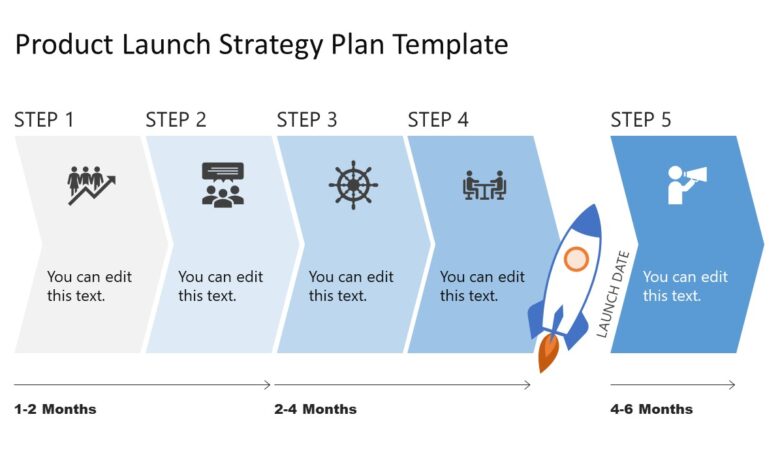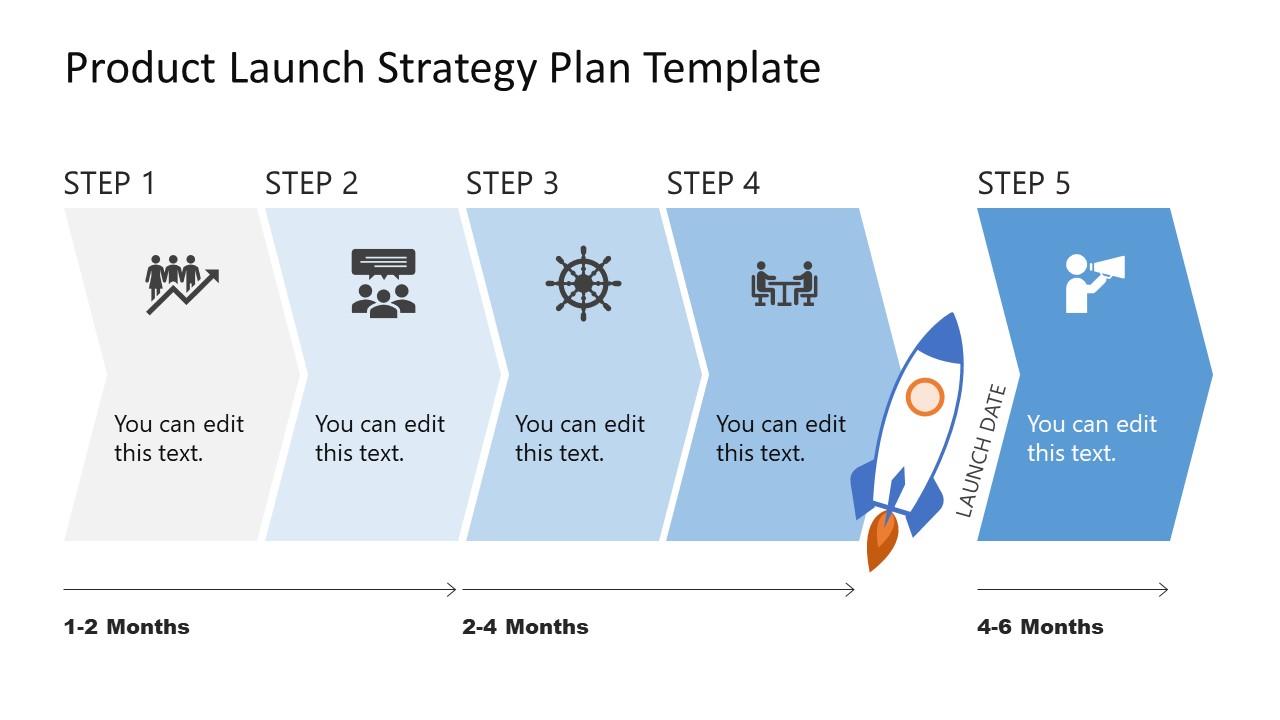
Launching a New Brand: 6 Ways to Maximize Impact with First Impressions
Launching a new brand 6 ways to maximize your impact with first impressions – Launching a new brand is an exciting journey, but it’s also a critical time to make a lasting impression. From defining your brand identity to building strong relationships, every step counts. This guide will explore six essential strategies to maximize your impact with first impressions and set your brand on the path to success.
Imagine a world where your brand becomes synonymous with quality, innovation, and trust. That’s the power of a well-executed brand launch. By understanding your target audience, crafting a compelling narrative, and delivering a seamless experience, you can create a buzz that will attract customers and build a loyal following.
Define Your Brand Identity
A strong brand identity is the foundation of a successful business. It’s what sets you apart from the competition, attracts your target audience, and builds lasting customer loyalty. This section will guide you through the process of defining your brand identity, covering key elements like core values, mission, target audience, and unique selling proposition.
Core Values and Mission
Your core values represent the fundamental beliefs and principles that guide your brand’s actions and decisions. They are the non-negotiable standards that shape your brand’s culture and behavior. Your mission statement, on the other hand, articulates your brand’s purpose and overall goals.
It defines what you aim to achieve and how you intend to make a difference in the world.For instance, Patagonia, a renowned outdoor clothing brand, has a mission to “build the best product, cause no unnecessary harm, use business to inspire and implement solutions to the environmental crisis.” Their core values include environmentalism, quality craftsmanship, and social responsibility.
This clear and consistent communication of their values and mission has built a strong brand identity that resonates with environmentally conscious consumers.
Target Audience
Understanding your target audience is crucial for creating a brand identity that resonates with them. It involves identifying their demographics, psychographics, needs, aspirations, and pain points. This allows you to tailor your brand messaging, products, and services to meet their specific requirements.For example, Apple targets a tech-savvy audience that values innovation, design, and user experience.
Their products are designed to meet the needs and aspirations of this audience, showcasing sleek aesthetics, intuitive interfaces, and cutting-edge technology.
Unique Selling Proposition (USP)
Your unique selling proposition (USP) is what differentiates your brand from competitors. It’s the key benefit that sets you apart and makes you the best choice for your target audience. For example, Amazon’s USP is its vast selection, competitive prices, and convenient delivery options.
These factors have contributed to its dominance in the e-commerce market. Similarly, Nike’s USP lies in its focus on athletic performance and inspiring athletes to achieve their goals.
Examples of Successful Brand Identities
Several brands have effectively communicated their identity, building strong connections with their audiences. Here are some notable examples:
- Apple:Known for its focus on innovation, design, and user experience, Apple has created a brand identity that resonates with a tech-savvy audience. Their minimalist aesthetic, intuitive interfaces, and cutting-edge technology have solidified their position as a leader in the tech industry.
- Nike:With its iconic swoosh logo and the tagline “Just Do It,” Nike has built a brand identity centered around athletic performance and inspiration. Their marketing campaigns often feature athletes pushing their limits, motivating consumers to strive for their goals.
- Red Bull:Red Bull’s brand identity is built around adventure, adrenaline, and extreme sports. Their sponsorship of events like Formula One racing and the Red Bull Cliff Diving World Series has solidified their association with a thrilling and adventurous lifestyle.
Craft a Compelling Brand Story

A compelling brand story is more than just a marketing tactic; it’s the heart and soul of your brand, the narrative that connects with your audience on an emotional level. It’s about weaving together the essence of your brand, its values, and its purpose, to create a story that resonates with your target audience.A strong brand story helps establish a connection with your audience, builds trust and loyalty, and ultimately drives brand preference and sales.
Examples of Compelling Brand Stories
Compelling brand stories are often found in companies that have a strong sense of purpose and mission.
- Nike:Nike’s story is about overcoming obstacles and achieving greatness. Their iconic slogan, “Just Do It,” embodies this spirit of determination and perseverance. Nike’s advertisements often feature athletes pushing their limits, inspiring audiences to strive for their own personal best.
- Apple:Apple’s story is about innovation and design. They’ve positioned themselves as a company that challenges the status quo and creates products that are both beautiful and functional. Their advertisements often feature sleek and minimalist designs, appealing to consumers who value aesthetics and functionality.
- Starbucks:Starbucks’ story is about creating a sense of community and connection. They’ve positioned themselves as a third place, a space where people can gather, connect, and enjoy a cup of coffee. Their advertisements often feature scenes of people coming together, highlighting the social aspect of their brand.
Aligning the Brand Story with Target Audience Values
A compelling brand story is not just about telling a good tale; it’s about aligning your story with the values and aspirations of your target audience. This involves understanding their needs, desires, and motivations, and tailoring your story to resonate with their worldview.For example, a brand targeting environmentally conscious consumers might tell a story about sustainability and ethical sourcing.
A brand targeting millennials might tell a story about innovation, technology, and social responsibility.
Communicating the Brand Story Across Platforms
Once you’ve crafted a compelling brand story, you need to communicate it effectively across different platforms. This includes:
- Website:Your website should be the central hub for your brand story, providing a comprehensive overview of your brand’s history, mission, and values.
- Social Media:Social media platforms provide opportunities to share snippets of your brand story through engaging content, such as videos, images, and blog posts.
- Advertising:Traditional and digital advertising campaigns can be used to tell your brand story in a more concise and impactful way.
- Public Relations:Public relations efforts can help amplify your brand story through media coverage, press releases, and other forms of outreach.
Design a Memorable Brand Experience: Launching A New Brand 6 Ways To Maximize Your Impact With First Impressions
First impressions are crucial for any brand, and a memorable brand experience is essential for building lasting connections with customers. Creating a seamless and consistent brand experience across all touchpoints is key to achieving this goal.
Design a Visual Identity That Is Consistent Across All Touchpoints
A consistent visual identity is crucial for creating a memorable brand experience. This means using the same colors, fonts, and imagery across all your marketing materials, website, social media, and even your physical store. This consistency helps to reinforce your brand message and create a sense of familiarity and trust with your customers.
For example, consider the iconic red and white colors of Coca-Cola. These colors are instantly recognizable and evoke feelings of happiness and celebration.
Examples of Successful Brand Experiences That Have Created a Lasting Impression
Many brands have successfully created memorable brand experiences that have left a lasting impression on their customers. For instance, consider the Disney theme parks. These parks are designed to create a completely immersive experience, transporting guests to different worlds through their attractions, entertainment, and even their food.
The meticulous attention to detail and consistent branding throughout the parks creates a truly magical experience that guests cherish.
The Importance of Creating a Seamless and Consistent Brand Experience
Creating a seamless and consistent brand experience is essential for building trust and loyalty with customers. When customers have a positive experience with your brand, they are more likely to become repeat customers and recommend your brand to others.
Launching a new brand is all about making a splash, and first impressions are everything. You want to grab attention and create a lasting impact, just like the recent news about a possible noose found near a CIA facility, which prompted the director to issue a warning.
c i a director issues warning after possible noose is found near facility While this event is serious, it highlights the importance of being mindful of your audience and delivering a message that resonates. Similarly, with your brand launch, you need to carefully consider your target market and present a compelling story that sets you apart from the competition.
Conversely, a negative experience can damage your brand reputation and lead to lost customers.
Strategies for Creating a Memorable Brand Experience Through Various Channels
There are many ways to create a memorable brand experience through various channels. Here are a few strategies:
- Personalize the customer experience: Use data to understand your customers’ preferences and tailor their experience accordingly. This could involve sending personalized emails, offering relevant product recommendations, or providing customized customer service. For example, Amazon uses data to personalize product recommendations and offers based on past purchases and browsing history.
- Create engaging content: Content marketing is a powerful tool for building brand awareness and engaging customers. Create valuable, informative, and entertaining content that resonates with your target audience. This could include blog posts, videos, infographics, or social media posts.
- Offer exceptional customer service: Providing exceptional customer service is essential for creating a positive brand experience. Go above and beyond to meet your customers’ needs and resolve any issues promptly and efficiently. For example, Zappos is known for its excellent customer service, with employees empowered to go the extra mile to ensure customer satisfaction.
- Use technology to enhance the customer experience: Technology can be used to create more engaging and convenient customer experiences. For example, consider using chatbots to provide instant customer support, mobile apps to offer loyalty programs, or augmented reality to create interactive product experiences.
- Build a strong community: Create a sense of community around your brand by engaging with your customers on social media, hosting events, or offering exclusive benefits to loyal customers. For example, Apple has built a strong community around its products by hosting events, offering exclusive content, and fostering a sense of belonging among its users.
Launching a new brand is all about making a strong first impression, and that means getting the word out there in a way that resonates. It’s similar to how political events unfold, like the upcoming hearings with former GOP lawmakers, which are expected to portray a stark picture of Trump as increasingly isolated and responsible for the events of January 6th, as reported in this article.
Just as these hearings will shape public opinion, your brand launch needs to captivate your audience and leave a lasting impression.
Launch with a Bang
The launch of your new brand is your chance to make a lasting impression and capture the attention of your target audience. A well-executed launch strategy can create a buzz, generate excitement, and set the stage for your brand’s success.
It’s not just about unveiling your brand; it’s about creating a memorable experience that leaves a lasting impact.
Developing a Comprehensive Launch Strategy, Launching a new brand 6 ways to maximize your impact with first impressions
A successful launch requires a strategic approach that considers multiple channels and touchpoints. Here’s a framework to guide your launch strategy:
- Define Your Target Audience:Identify the specific demographics, interests, and behaviors of your ideal customers. This will help you tailor your launch messages and choose the most effective channels to reach them.
- Set Clear Launch Goals:Determine what you want to achieve with your launch. Are you aiming for brand awareness, generating leads, driving sales, or building a community? Setting clear goals will help you measure the success of your efforts.
- Choose the Right Channels:Select the platforms and channels that align with your target audience and launch goals. This could include social media, email marketing, public relations, paid advertising, events, partnerships, and more.
- Create a Launch Timeline:Develop a detailed timeline that Artikels all the key activities and milestones leading up to and following your launch date. This will ensure a smooth and organized launch process.
- Develop Compelling Content:Craft engaging and informative content that highlights the unique value proposition of your brand. This could include blog posts, articles, videos, social media posts, infographics, and more.
- Build Anticipation and Excitement:Use pre-launch campaigns to create a sense of anticipation and excitement around your brand launch. This could involve teaser campaigns, countdown timers, exclusive offers, and behind-the-scenes content.
- Measure and Analyze:Track the performance of your launch activities and analyze the data to identify what’s working and what needs improvement. This will help you refine your strategy and optimize your future campaigns.
Build Strong Relationships

In the realm of brand building, a strong foundation of relationships is paramount. The success of a brand is not solely dependent on its products or services, but also on the connections it cultivates with its audience. Building strong relationships with customers, partners, and influencers is crucial for fostering brand loyalty, driving growth, and ensuring long-term success.
Strategies for Engaging with Customers and Building a Loyal Following
Developing strategies for engaging with customers and building a loyal following is essential for any brand seeking to establish a lasting connection with its audience. The following points provide insights into effective approaches:
- Personalized Communication:Employing personalized communication, such as tailored email campaigns or personalized recommendations, demonstrates a genuine interest in individual customers and their preferences. This fosters a sense of value and appreciation, leading to increased customer satisfaction and loyalty. For example, a clothing retailer might personalize email recommendations based on past purchases or browsing history, suggesting items that align with the customer’s style and interests.
- Interactive Content:Engaging customers through interactive content, such as polls, quizzes, or contests, encourages participation and fosters a sense of community. This interactive approach allows brands to gather valuable feedback, build relationships, and generate excitement around their brand. For instance, a beauty brand might host a social media poll asking customers to vote for their favorite product, creating a sense of involvement and encouraging discussion.
Launching a new brand is all about making a splash, and first impressions are everything. It’s like the difference between walking into a bustling party and finding a quiet corner – you want to be noticed! But just like the tragic story of a Columbia graduate student brutally beaten in Manhattan, where a mother desperately seeks answers columbia graduate student brutally beaten in manhattan mother struggles for answers , a brand’s first impression can have lasting consequences.
So, whether it’s a captivating tagline or a powerful visual, make sure your brand’s first impression leaves a positive mark that resonates long after the initial encounter.
- Customer Feedback Mechanisms:Actively seeking and responding to customer feedback demonstrates a commitment to continuous improvement and customer satisfaction. Brands can utilize surveys, reviews, and social media monitoring to gather insights and address concerns, fostering a sense of trust and transparency. For example, a restaurant might solicit feedback through online surveys or encourage reviews on platforms like Yelp, actively responding to customer comments and addressing any issues raised.
- Loyalty Programs:Implementing loyalty programs incentivizes repeat purchases and rewards loyal customers for their ongoing support. These programs can offer exclusive discounts, early access to new products, or personalized experiences, demonstrating appreciation for valued customers. For instance, a coffee shop might offer a loyalty card that provides free drinks after a certain number of purchases, encouraging repeat visits and building customer loyalty.
Utilizing Social Media and Other Platforms to Foster Community and Interaction
Social media platforms provide a powerful avenue for brands to connect with their audience, foster community, and encourage interaction. Here are some key strategies for maximizing the potential of social media:
- Active Engagement:Regularly posting engaging content, responding to comments and questions, and participating in relevant conversations demonstrates a commitment to interacting with the audience. This fosters a sense of connection and encourages active participation within the brand’s online community. For example, a fitness brand might share workout videos, post inspirational quotes, and respond to comments from followers, creating a supportive and interactive environment.
- Live Events and Q&A Sessions:Hosting live events, such as Q&A sessions or product demonstrations, allows brands to engage with their audience in real-time, fostering a sense of immediacy and connection. This interactive approach allows brands to address questions, provide insights, and build relationships through direct interaction.
For instance, a beauty brand might host a live Q&A session with a makeup artist, allowing followers to ask questions and receive personalized advice.
- User-Generated Content:Encouraging user-generated content, such as customer testimonials or product reviews, allows brands to leverage the authenticity and credibility of their audience. This approach not only generates valuable content but also showcases the positive experiences of existing customers, influencing potential buyers.
For example, a travel company might encourage customers to share their travel photos and experiences on social media, using a branded hashtag to promote user-generated content.
Measure and Adapt

The initial launch of your brand is just the beginning. To ensure sustained success, you need to track your progress, analyze the data, and adapt your strategies based on what you learn. This continuous cycle of measurement and adaptation is essential for optimizing your brand performance and achieving your long-term goals.
Key Metrics to Track
Tracking key metrics provides insights into your brand’s performance and helps you understand what’s working and what needs improvement.
- Website Traffic:Track website visits, bounce rate, time on site, and pages per visit to understand user engagement. Tools like Google Analytics can provide detailed insights into website traffic and user behavior.
- Social Media Engagement:Monitor likes, shares, comments, and mentions on social media platforms to gauge audience interest and interaction. Tools like Hootsuite or SproutSocial can help you track and analyze social media performance.
- Brand Mentions:Track brand mentions across the web, including news articles, blogs, and social media posts. Tools like Brand24 or Mention can help you monitor online conversations about your brand.
- Lead Generation:Track the number of leads generated through your website, social media, or other marketing channels. This metric helps you understand the effectiveness of your lead generation efforts.
- Sales and Revenue:Track sales and revenue generated from your brand to measure the overall financial performance of your business.
Importance of Ongoing Monitoring and Analysis
Continuous monitoring and analysis are essential for understanding the effectiveness of your brand strategy.
- Identify Trends:Regularly analyze your data to identify emerging trends and patterns in your audience behavior. This information can help you adjust your marketing strategies to align with changing customer preferences.
- Measure Campaign Effectiveness:Track the performance of your marketing campaigns to determine which strategies are driving the most engagement and conversions. Use this data to optimize future campaigns and allocate resources effectively.
- Improve Customer Experience:Monitor customer feedback and reviews to identify areas for improvement in your brand’s products, services, and customer service. This information can help you enhance the customer experience and build stronger relationships with your audience.
- Stay Ahead of the Competition:Track your competitors’ activities and performance to understand their strategies and identify opportunities for differentiation. This information can help you stay ahead of the competition and maintain your brand’s position in the market.
Strategies for Adapting Brand Strategy
Based on the data you gather, you can adjust your brand strategy to optimize performance and achieve your goals.
- Target Audience Refinement:If your data reveals that your initial target audience is not responding as expected, refine your target audience based on the insights you gain. This might involve focusing on a different demographic, geographic area, or interest group.
- Messaging Optimization:Analyze the effectiveness of your brand messaging by tracking audience engagement with different content formats, topics, and styles. Adjust your messaging to resonate better with your target audience and drive desired actions.
- Channel Optimization:Monitor the performance of your marketing channels to identify which ones are most effective in reaching your target audience. Allocate resources to the channels that deliver the best results and adjust your marketing mix accordingly.
- Product or Service Adjustments:Based on customer feedback and market trends, consider making adjustments to your products or services to meet evolving customer needs. This might involve introducing new features, improving existing offerings, or discontinuing products that are not performing well.
Using Analytics to Optimize Brand Performance
Leveraging analytics tools provides valuable insights for optimizing your brand’s performance over time.
- Identify Key Performance Indicators (KPIs):Define your key performance indicators (KPIs) that align with your brand’s goals. This might include website traffic, social media engagement, lead generation, or sales and revenue.
- Set Benchmarks:Establish benchmarks for your KPIs to track progress and measure improvement over time. This will provide a clear understanding of how your brand is performing compared to industry averages or previous performance levels.
- A/B Testing:Use A/B testing to compare different versions of your website, landing pages, or marketing materials to determine which performs best. This data-driven approach helps you optimize your marketing strategies and improve user experience.
- Data-Driven Decision Making:Base your brand strategy decisions on data and insights gathered through analytics. This data-driven approach ensures that your strategies are aligned with your target audience and market trends, leading to more effective outcomes.
Last Recap
Launching a new brand is like planting a seed – it takes time, effort, and nurturing to blossom into something truly remarkable. By focusing on your brand identity, storytelling, customer experience, and strategic launch, you can create a foundation for sustainable growth.
Remember, the journey is just as important as the destination. Stay true to your vision, adapt to the ever-changing market, and build relationships that will last a lifetime.






